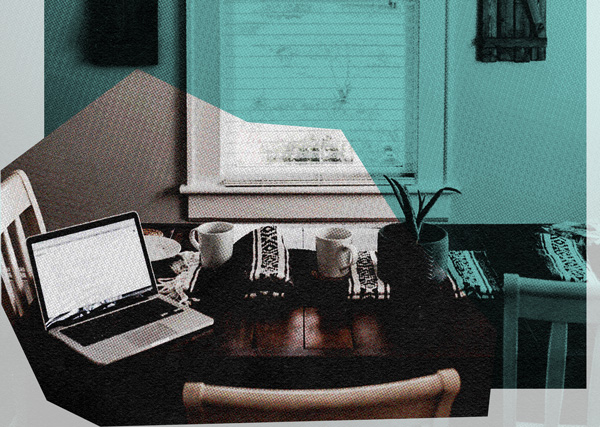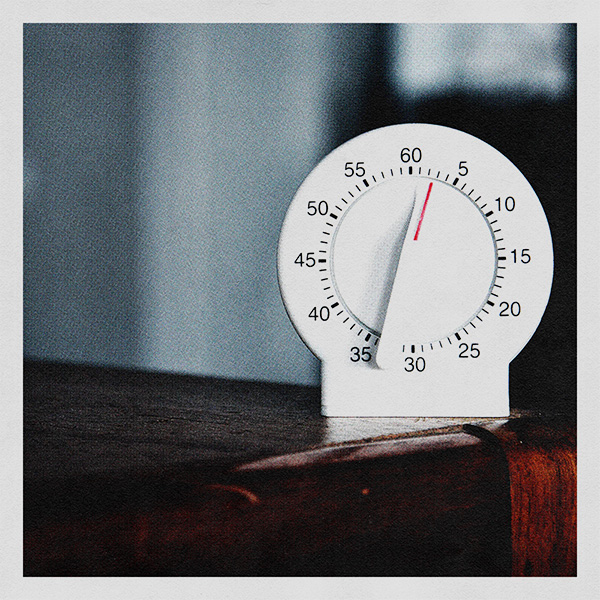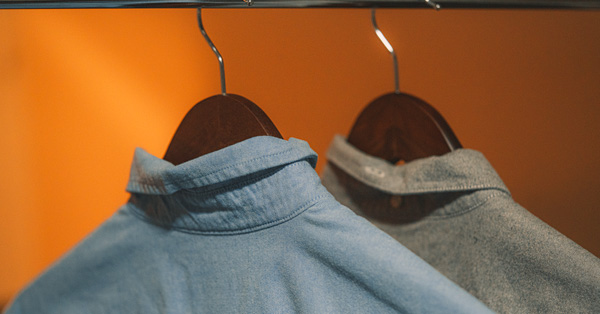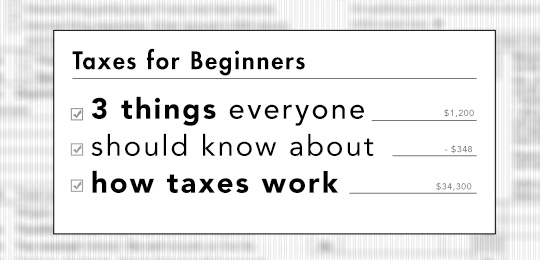I’m no stranger to working from home and, in fact, I consider myself pretty good at it.
I worked from home for three years before I went back to grad school. Even when I became a dad and started the program last year, I still needed several productive hours a day to happen in the same place I eat, sleep, shower, and relax.
But coronavirus has changed all that.
My wife was recently laid off from her restaurant job, we don’t have childcare anymore, and our city (like so many) is in lockdown. So here we are, all together, sharing a tiny apartment.
Together. All the time.
We’re happy to be doing our part to flatten the curve, but it’s definitely a unique challenge for mental health and simply getting things done.
Here’s A Few Of My Productivity Killers
- Fun toddler
- Fun spouse
- No one’s watching if I just pop on to Youtube or Netflix for 15 minutes or three hours
- Fussy toddler that needs a change, a drink, or some wrasslin’ time
- Stressed spouse that needs a break from non-stop toddler
- Making snacks for myself or others
- Checking the never-ending tide of bad news
Those are mine … what are yours?
All this has me asking: How do I continue a demanding professional doctorate program while being a good dad and a supportive partner … all from the slightly claustrophobic comfort of my bedroom or … living room?
I’ve had to dig deep into my bag of tricks to adapt, and I’m happy to share some of my findings with you.
Working From Home: Dream Or Nightmare?
Google “working from home” and you’ll see a spectrum: some say working from home is the dream… others say it’s a nightmare of loneliness and lost productivity. The reality, of course, is usually somewhere in between. There are both challenges and benefits to working from home.
The challenges are real: the lack of social contact structure can wreak havoc on anyone’s normal productivity level.
But whether you live alone, or share space with roommates or family, there’s an opportunity to tighten up your WFH game AND enjoy it more while doing your civic duty.
Embrace The Opportunity
There’s a HUGE thing to be gained from enforced working from home:
TIME.
Between nixing your commute and spending less time in transition from place-to-place or task-to-task, working from home means you have more time for stuff you actually enjoy.
Take a walk, watch a video, take a shower, make a most excellent snack, or do something else you wouldn’t normally get to do.
Maybe have sex with your partner? Just sayin. That’s an option now.
If you can embrace the opportunities of working from home it can help offset some of the negatives. You can even use it to set up an incentive system that helps you be more productive than you’ve ever been at your office (more on that later).
If you’ve always dreamed of working from home, then take this as a great opportunity to show your company that you can be just as productive. When the world is no longer on fire, maybe you’ll find yourself with a sweet WFH gig all the time.
Make A Schedule
I can’t emphasize enough how much starting off the day right can change the game.
When I first started working from home I didn’t have a schedule and all too often 3, 4, 5 o’clock would roll around and I hadn’t gotten much done. My reaction: freak out, stay up late to catch up, and start the next day on the back foot.
What I learned over a few months was that if I started the day avoiding work, I was setting myself up for less productivity, less sleep, and ultimately less fun.
The solution: a schedule.
Create A Schedule Using A Time Log
It’s important to make a schedule that you can keep. If your schedule reads: 8am – 6pm – Work then you’re doing it wrong unless you’re a robot.
We all have natural ups and downs in our energy, and managing your energy is the key to maximizing productivity.
When I create a new schedule I find it helpful to keep a time log for a day or two to see how I’m actually using my time, when I feel most productive, and where I can improve.
For instance, I’m always amazed at how long I actually spend eating lunch. It really takes me an hour, between prep, munching, and dinking around. I used to try and squeeze it into a half hour, but it never worked.
Instead, I’ve learned (using time logs) that an hour long lunch break sets me up for a more productive second half of the day. I’ve also experimented with working out midday if I’m feeling tired, which turbo-charges the afternoon and evening.
Try keeping a time log for just one day while working from home. You’ll be amazed at how you spend your time … and all the little pockets you can use more intentionally once you know about them.
Time logs can be found everywhere on the web, from Excel files to printable sheets. You can even use your favorite note app … but beware your phone’s other temptations!
Your Schedule Should Include Breaks
Remember how I said you should manage your energy, not your time?
It’s not my insight. It comes from a Harvard Business Review article that changed my life a few years ago, and it’s helped me realize that I can work for maybe two hours MAX before I need a break.
I’m also most productive when I take many small recharge breaks throughout the day.
Using your time log, look at where you naturally want to take breaks throughout the day and let yourself have them (within reason). The results will make the rest of your day flow so much more smoothly.
You can also use breaks as mental M&M’s – a little reward for doing your work period. That way, your entire day becomes a back and forth of effort and reward … effort and reward.
Set Up Your Space
Pick a spot in your house or apartment to be your work area.
Even if your workspace is your kitchen table, setting up your laptop in the same place everyday will help you stay on task when you’re working, as well as help you feel relaxed when you’re done working.
Of course, it’s ideal if you have a dedicated office to yourself. If you’re working around other people and other schedules, consider investing in some sound-canceling headphones or a room divider to set your work area apart from the rest of your house.
Also, now that it’s getting nice in some parts of the country, consider working outside! Set up a lawn chair and take calls from your “garden office.”
Stop Setting Goals, Start Setting Time
As a procrastinator with ADD, goals used to be my nemesis. Goals seemed like just another way to feel bad about myself.
That is, until I discovered the pomodoro method. You set a 25 minute timer, work for 25 minutes, and then take a 5 minute break. It’s that simple, but it’s revolutionized my work habits.
You might be asking, “What’s so revolutionary about that?”
When I started pomodoros, I decided to log time spent on task rather than setting specific targets for tasks completed. As long as I’m sitting down and working, the theory was, the productivity will take care of itself.
And it did. The frameshift in mindset has literally saved my career …twice. Once while working in TV and again now that I’m in graduate school.
No task avoidance, no anxiety about how big the job ahead is. Just one foot in front of the other, 25 minutes at a time.
Working in these reasonable chunks of time frees you from the overwhelming tyranny of the to-do list, and ensures that you’re taking regular breaks to refresh your brain.
How does this relate to setting goals? Using a metric like time spent rather than tasks achieved allows you to set a goal that’s not only achievable but productive as well.
If you struggle with anxiety or procrastination, set a goal of two hours ON for the first day. Make it easy to give yourself a pat on the back. In a day or two, extend your goal by an hour.
This technique is especially useful if you have other responsibilities or aspirations to work around. I need to study, but I also have childcare duties, part time work, exercise, and just spending time with my family. Setting timers allows me to plan out how many work periods I can reasonably dedicate to each goal while making sure I get some break times.
Craft A Routine
Even if your work doesn’t require you to be available at a specific time, set an alarm and wake up at the same time everyday. Get dressed. Make coffee. Do whatever it takes to feel like you’re getting ready to have a good day.
Our brains love routines and habits, even when they get out of control. Luckily, working from home offers the chance to re-boot your routine to be more what you want. Remember all that time saved on your commute? Use it to make a more intentional morning routine.

Learn how to make better coffee at home according to a barista
The point of a home work routine isn’t to squeeze more labor out of you, it’s about having a good day. When do you feel best? I’m willing to bet it’s when you do your work, take time for yourself, and achieve some measure of balance in your life.
Routine can help achieve balance.
Set Office Hours, And Get Buy-In From Your Roommates
What is going to an office?
No, really: why do we go to “work places?”
If you mostly work on a computer and have decent internet, I would argue the main reason we go to work is emotional. It sets an emotional boundary between the work place and the home place for you, your family, and your job.
Take an example: when I’m at work, my wife won’t call me unless it’s really important (or even an emergency).
At home, she calls me all the time. With her voice. Because I’m 6 feet away.
And that’s totally fine! Because our culture has set up emotional, communicative, and physical barriers between work and home (the digital erosion of these barriers is another topic!).
Setting “office hours” at home and sticking to them is how you recreate the emotional boundary between work and off time. Talk to the people you share space with and explain that when you’re “on,” you’re not available.
For most people, someone dropping in on them at work unannounced would be considered a bit rude or disrespectful of your time. Try to set something of the same boundary at home, so that you can get work done as quickly as possible and then have more time for hangouts and other responsibilities afterward.
With that said…
Stay Flexible, Be Gracious
Our shared situation is evolving day to day and week to week. Something that works today may not work tomorrow. Fortunately, this can also be an opportunity to cultivate creativity in your work life.
When your roommate, partner, or pet needs something during “office hours,” it’s OK to break a pomodoro to help them.
When your work’s video chat crashes, try to be cheerful and collaborative with your workmates to solve the issue.
Everyone is in new territory. No one has all the answers. Few of us are at our best right now.
Be OK With Being Less Productive
This guide is about being more productive while working from home.
But.
This is a stressful, uncertain, and anxious time. Productivity will be less because you need to put more time into self care and care of your loved ones. Even if you never get sick, you may be called upon to help an elderly neighbor with groceries or do an extra load of laundry for your housemate.
It takes time to wipe all your damn groceries with bleach, and it takes an emotional toll to be bombarded with terrible news for weeks on end.
We’re in an extraordinary time, and it’s okay if it takes some time to figure out how to be normal. Protect your health. Protect your sleep. And of course, protect each other.
Then, get back to work, play, and living life … 25 minutes at a time.






















